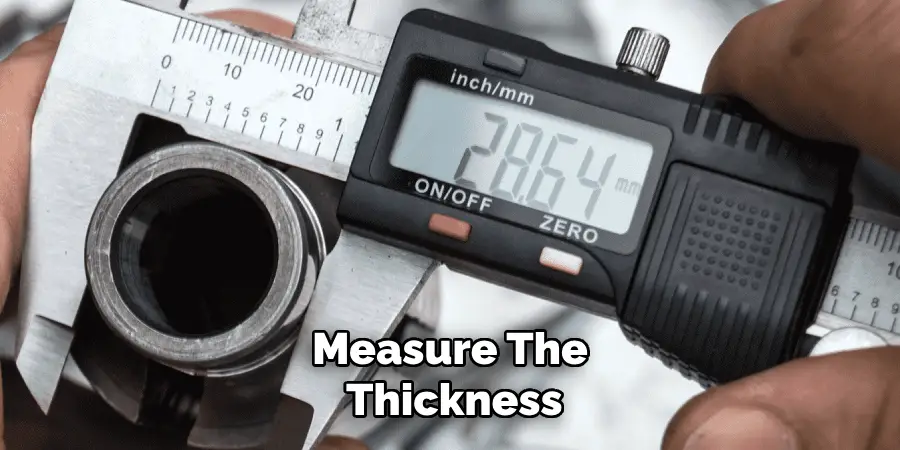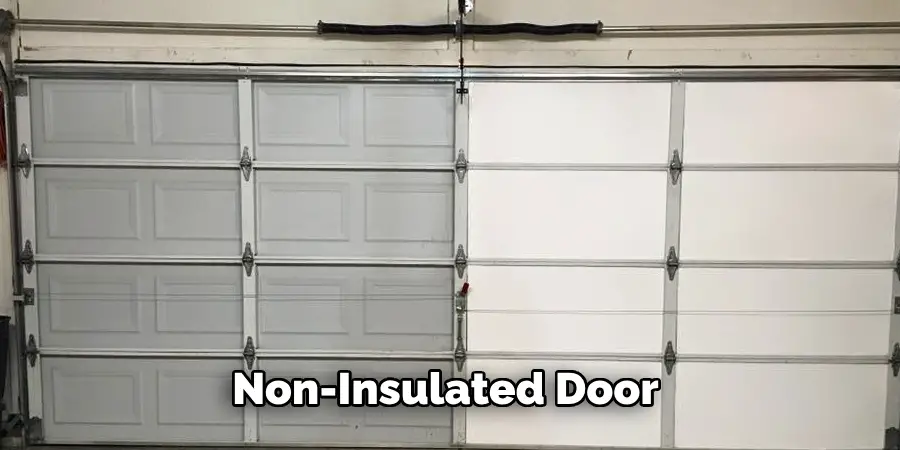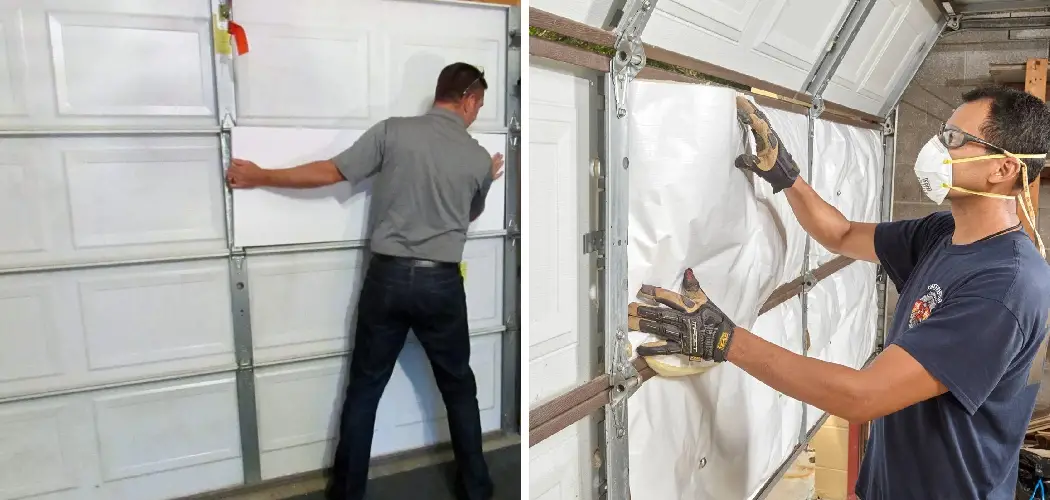Understanding whether your garage door is insulated is essential for maintaining energy efficiency and protecting your belongings from extreme temperatures.

Insulated garage doors can significantly reduce heat transfer, keeping your garage warmer in the winter and cooler in the summer. This not only enhances comfort but also helps lower energy bills. In this guide, we’ll explore how to tell if your garage door is insulated, as well as the various types of insulated doors available on the market today.
Importance of Having an Insulated Garage Door
Having an insulated garage door plays a vital role in maintaining the overall energy efficiency of your home.
By reducing heat exchange, insulated doors prevent significant temperature fluctuations, which can lead to the need for excessive heating or cooling in adjacent spaces. This is particularly important if your garage is connected to your home, as it helps to ensure a more stable indoor climate.
Additionally, an insulated garage door can help protect your belongings, including vehicles, tools, and equipment, from extreme temperatures and moisture, thereby prolonging their lifespan.
Noise reduction is another benefit, as insulated doors tend to dampen sound, providing a quieter environment both inside and outside the garage. Overall, investing in an insulated garage door can lead to increased comfort, reduced energy costs, and enhanced protection for your property.
Why Garage Door Insulation Matters
Garage door insulation is crucial for several reasons that extend beyond just temperature control. Firstly, it significantly improves energy efficiency, reducing the costs associated with heating and cooling your home.

In regions with extreme weather, an insulated garage door helps maintain comfortable indoor temperatures, which is particularly beneficial for those who use their garage as a workspace or additional living area. Secondly, it enhances the durability of your belongings by shielding them from damaging temperature fluctuations and moisture, thus prolonging their lifespan.
Moreover, insulated garage doors contribute to noise reduction, creating a more peaceful environment. By minimizing sound transmission from outside, they can enhance the overall comfort of your home, especially in quiet neighborhoods. Ultimately, opting for an insulated garage door is a smart investment that yields long-term savings and improved living conditions.
10 Methods How to Tell if Your Garage Door Is Insulated
1. Examine the Thickness of the Door
One of the most straightforward ways to determine if your garage door is insulated is by examining its thickness. Insulated garage doors are generally thicker than non-insulated ones. Standard non-insulated doors are usually around 1 to 1.5 inches thick, while insulated doors can range from 1.5 to 2 inches or more.

The added thickness is due to the layers of insulation sandwiched between the door panels. To measure the thickness, use a ruler or tape measure along the edge of the door. If you notice that your door is relatively thick, it is likely insulated, which contributes to better thermal performance and noise reduction.
2. Check for Visible Insulation Layers
Another method to determine if your garage door is insulated is to check for visible insulation layers. Insulated doors typically have two or more layers: an outer metal or wood layer, an inner insulation layer, and sometimes a backing layer on the inside.
If your door has a panel construction, try to look between the panels for any visible insulation material, such as foam or fiberglass. If you can see a white or yellowish material, it is likely the insulation. Some doors may also have a covering over the insulation, making it more challenging to spot, but any signs of multiple layers indicate that your door is insulated.
3. Inspect the Weight of the Door
The weight of the garage door can be a significant indicator of whether it is insulated. Insulated doors are generally heavier than non-insulated doors because of the additional material used in the construction. You can assess the weight by manually lifting the door or observing how it operates when disengaged from the garage door opener.
If the door feels heavier than expected or is more challenging to lift manually, it likely contains insulation. Additionally, if your garage door opener appears to strain more when lifting the door, this could also suggest that the door is insulated.
4. Listen for Noise Reduction

Insulated garage doors provide better noise reduction than non-insulated ones due to the dense material used in the insulation. To test this, close the garage door and observe the level of noise from outside sources, such as traffic, wind, or nearby activities.
If you notice that the noise level inside the garage is significantly lower with the door closed, your door is likely insulated. Conversely, if you can hear a considerable amount of noise coming through the door, it might not have any insulation. Insulated doors not only help to maintain a quieter garage environment but also reduce noise from the door itself during operation.
5. Feel the Surface Temperature
Another effective method to determine if your garage door is insulated is to feel the surface temperature of the door. On a hot or cold day, touch both the inside and outside surfaces of the door. If the door is insulated, the inside surface should feel significantly different in temperature compared to the outside surface.
For example, on a cold day, an insulated door will feel warmer inside because the insulation helps to block the cold from penetrating through. In contrast, a non-insulated door will have little to no difference in temperature between the inside and outside surfaces. This temperature disparity is a strong indication that your garage door is insulated.

6. Check the Manufacturer’s Information
If you’re uncertain about whether your garage door is insulated, checking the manufacturer’s information is a reliable method. Most garage doors come with a label or a manual that provides details about the door’s construction, including whether it is insulated and what type of insulation is used.
Look for this information on a sticker typically located on the inside edge of the door or in the garage door’s paperwork. The label might also include the R-value, which measures the insulation’s effectiveness—the higher the R-value, the better the insulation. If the R-value is listed, it’s a clear indication that your door is insulated.
7. Look for Insulation Gaps
Examine the edges and seams of your garage door for any gaps or inconsistencies in the insulation. Insulated garage doors are designed to have minimal gaps to maintain their insulating properties. If you see that the door fits snugly into the frame with no visible gaps, it is likely insulated. Additionally, if you can access the inside of the door, check the edges where the panels meet.
Insulated doors often have a continuous layer of insulation, while non-insulated doors may have visible gaps where the insulation would normally be. The presence of insulation around the edges helps to prevent drafts and maintain a stable temperature inside the garage.
8. Test for Condensation
Condensation can be another clue as to whether your garage door is insulated. On humid days, non-insulated doors are more prone to condensation because the temperature difference between the inside and outside surfaces can cause moisture to accumulate. To test this, observe your garage door on a humid day or after a temperature drop.
If you notice that the door remains dry without signs of condensation, it is likely insulated, as the insulation helps to regulate the temperature and reduce moisture buildup. On the other hand, if you see water droplets forming on the inside surface, it may indicate that the door lacks insulation.
9. Assess the Door’s Durability and Strength
Insulated garage doors are generally more durable and robust compared to non-insulated ones. The added layers of insulation provide additional strength, making the door more resistant to dents, warping, and other damage. To assess the durability, gently press on different sections of the door.
If the door feels solid and doesn’t flex easily, it is likely insulated. Insulated doors are often made from heavier gauge steel or reinforced materials, contributing to their overall strength and longevity. This added durability is especially important in areas prone to extreme weather conditions, where an insulated door can better withstand environmental stressors.
10. Consult a Professional
If you’re still unsure whether your garage door is insulated after trying these methods, consulting a professional can provide a definitive answer. A garage door technician can inspect the door and provide you with detailed information about its construction, including the type and quality of insulation, if present.
Professionals have the experience and tools needed to accurately assess the door’s insulation and can offer advice on improving energy efficiency or upgrading to a better-insulated model if necessary. This option is particularly useful if you’re considering replacing or upgrading your garage door and want to ensure that your investment meets your insulation needs.
Conclusion
Determining whether your garage door is insulated is essential for maintaining energy efficiency and comfort in your home.
By employing the methods discussed—listening for noise reduction, feeling surface temperatures, checking manufacturer information, looking for insulation gaps, testing for condensation, assessing durability, and consulting professionals—you can gain a comprehensive understanding of your garage door’s insulating properties. Thanks for reading our blog post on how to tell if your garage door is insulated! We hope you found it helpful and informative.
I am Rick. I grew up helping my dad with his handyman service. I learned a lot from him about how to fix things, and also about how to work hard and take care of business. These days, I’m still into fixing things- only now, I’m doing it for a living.
I’m always looking for new ways to help people grow and develop. That’s why I have created this blog to share all my experience and knowledge so
that I can help people who are interested in DIY repair.

